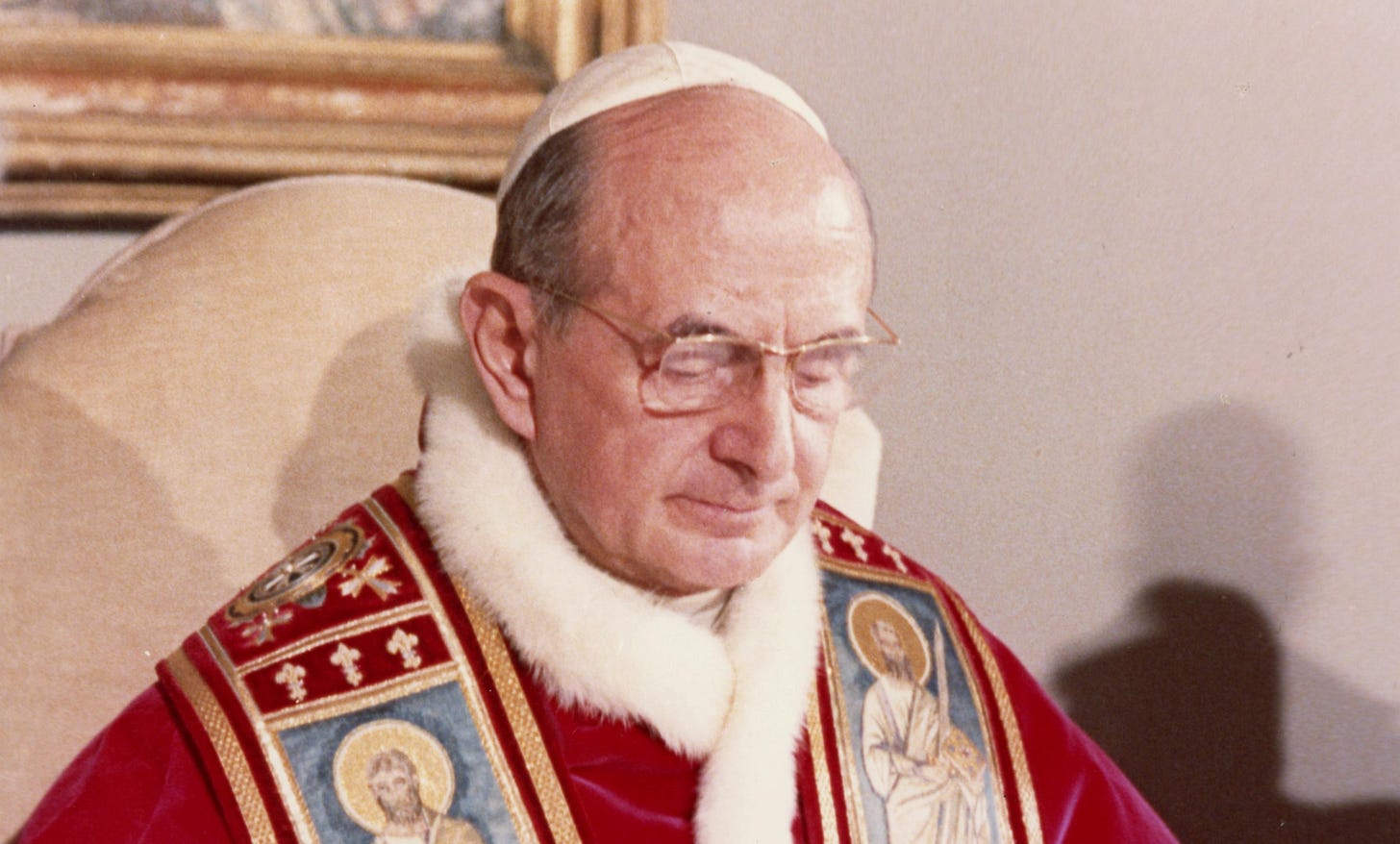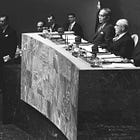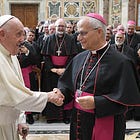To celebrate Humanae Vitae's anniversary... or not?
Was Paul VI's Encyclical Humanae Vitae on contraception good or bad for the Church?

Was Paul VI's Humanae Vitae good or bad for the Church?
57 years on from Humanae Vitae
(WM Round-up) – Fifty-seven years ago today, Paul VI issued Humanae Vitae, reaffirming the Church’s prohibition of contraception.
While he is lauded as a hero for this, the fact is that his reaffirmation was made in a way that helped redefine marriage, obscure doctrine, and accelerate moral collapse.
At the time of its release in 1968, many Catholics had already come to believe that the Church’s teaching might change. This belief had been fostered since at least 1963, when John XXIII established a commission to study the issue of artificial birth control.
The commission was named “The Pontifical Commission for the Study of the Problems of the Family, Population, and Birth” – immediately treating children and population growth as problems, not blessings. Paul VI later expanded the commission to 72 members, including laypeople and liberal theologians, many of whom ultimately voted to approve contraception.
Paul VI ultimately rejected this vote to approve contraception, and Humanae Vitae finally appeared on 25 July 1968.
This resulted in an massive conflict through the rest of the 1960s, and ever since.
To make matters worse, Paul VI did not even attempt to enforce his decision through any serious use of penalties, let alone excommunications.
The scandal of the commissions
While we can and should recognise a degree of courage on Paul VI’s part, we must also recognise that his actions (and those of John XXIII) and rationale for maintaining the condemnation of contraception were grotesquely scandalous.
Canon 1325 gives us a definition of a heretic:
§ 2. After the reception of baptism, if anyone, retaining the name Christian, pertinaciously denies or doubts something to be believed from the truth of divine and Catholic faith, [such a one is] a heretic […].1
Whether or not the intrinsic immorality of contraception is a matter of faith (as opposed to another theological note), it is hard to see how establishing and expanding the commission into this settled question can be morally justified.
The question was already settled, both by the universal ordinary magisterium, and by Pope Pius XI’s encyclical Casti Conubii. In 1930, in direct response to the Anglican Church’s Lambeth Conference, the pope affirmed not only the intrinsic evil of artificial birth control, but also the proper hierarchy of the ends of marriage: the procreation and education of children as primary, with mutual support as secondary and subordinate.
Regarding contraception, Pius XI wrote:
“And now, Venerable Brethren, we shall explain in detail the evils opposed to each of the benefits of matrimony. First consideration is due to the offspring, which many have the boldness to call the disagreeable burden of matrimony and which they say is to be carefully avoided by married people not through virtuous continence (which Christian law permits in matrimony when both parties consent) but by frustrating the marriage act. Some justify this criminal abuse on the ground that they are weary of children and wish to gratify their desires without their consequent burden. Others say that they cannot on the one hand remain continent nor on the other can they have children because of the difficulties whether on the part of the mother or on the part of family circumstances.
“But no reason, however grave, may be put forward by which anything intrinsically against nature may become conformable to nature and morally good. Since, therefore, the conjugal act is destined primarily by nature for the begetting of children, those who in exercising it deliberately frustrate its natural power and purpose sin against nature and commit a deed which is shameful and intrinsically vicious.
“Small wonder, therefore, if Holy Writ bears witness that the Divine Majesty regards with greatest detestation this horrible crime and at times has punished it with death. As St. Augustine notes, ‘Intercourse even with one's legitimate wife is unlawful and wicked where the conception of the offspring is prevented. Onan, the son of Juda, did this and the Lord killed him for it.’
“Since, therefore, openly departing from the uninterrupted Christian tradition some recently have judged it possible solemnly to declare another doctrine regarding this question, the Catholic Church, to whom God has entrusted the defense of the integrity and purity of morals, standing erect in the midst of the moral ruin which surrounds her, in order that she may preserve the chastity of the nuptial union from being defiled by this foul stain, raises her voice in token of her divine ambassadorship and through Our mouth proclaims anew: any use whatsoever of matrimony exercised in such a way that the act is deliberately frustrated in its natural power to generate life is an offense against the law of God and of nature, and those who indulge in such are branded with the guilt of a grave sin.
“We admonish, therefore, priests who hear confessions and others who have the care of souls, in virtue of Our supreme authority and in Our solicitude for the salvation of souls, not to allow the faithful entrusted to them to err regarding this most grave law of God; much more, that they keep themselves immune from such false opinions, in no way conniving in them.”2
The Holy Office reaffirmed this structure under Pius XII, explicitly rejecting personalist theories that treated marriage as ordered chiefly to the couple’s emotional or spiritual union.
But in the years leading up to Humanae Vitae, John XXIII and Paul VI’s actions eroded this clarity. Theologians adopted a subjective lens, focusing on love and intimacy as ends in themselves. Meanwhile, contraception use spread rapidly, as priests and bishops assured the faithful that change was coming.
This clarity was further undermined by Paul VI’s radically altered foundation for the condemnation. The document introduced ambiguous terms like “unitive significance,” treating procreation almost as a by-product of intimacy, rather than its true purpose. On a few occasions, Paul VI refers to the “unitive significance” before the “procreative significance” – and he variously inverts or equates the two.
The language mirrored the very theories earlier popes had condemned. Even the language of “significance” represents something of an innovation, and a departure from the traditional language of the “ends” of marriage – a term, more in keeping with the natural law philosophy of the Church.
In a sense, the prohibition of contraception becomes something like a Catholic foible, equivalent to not eating meat on Fridays, and based on the will of the pope and subjective realities, rather than objective human nature.
This leaves Catholics unable to argue robustly against artificial birth control, of against the “other forms of marriage” which have arisen since that time.
John Lane and Louie Verrecchio
The result of the whole debacle was confusion and contradiction. John Lane summarised it as follows:
“It’s one of those fantastic situations in which a modernist comes out with something that’s thoroughly modernist – and because there’s a little germ of Catholic truth buried in the middle of it, the conservatives queue up to praise, and the Liberals queue up to condemn.
“That document was beyond disastrous.”
In 2020, Louie Verrecchio and John Lane published an hour-long discussion on the history, context and impact of Humanae Vitae. Lane explains how the affair left faithful Catholics without the traditional, rational grounds to defend Church teaching, which reduced the prohibition on artificial birth control to the level of a taboo.
The real damage was in how Humanae Vitae framed the issue—and what it silently allowed to take root beforehand. Lane even suggests that the collapse of Vatican II was in part due to the way the issue was handled:
“The commission was expanded by Paul VI to include seventy-two members, including, I think, seven cardinals and something like twelve bishops, a bunch of laypeople, a bunch of theologians—just this huge committee. […]
“[I]t lasted for years, lasted for years—and all this time the Catholic faithful have been.. it’s been communicated to them, by the action of John XXIII in opening this up and establishing the commission, and then reinforced by Paul VI in expanding the commission to seventy-two members, that this is an open question.
“And so you know what happened: everybody started using contraception. Started using the pill. (Not everybody, of course.)
“So by the time Humanae vitae came out, half the Catholic married world was probably using it. It was some very large percentage. They’re addicted to it already. And then you come along and say: ‘Aha! Taboo still stands!’ […]
“And so you had that situation. I say it’s satanic, because obviously, for those people who… let’s say, were innocent morally in using it, thinking that it was okay because their priest said it was okay, and a famous theologian said it was okay – then they’re told it’s a mortal sin. They’re addicted to its use. They’ve gotten used to this whole new way of seeing marriage. And suddenly they’re involved in mortal sin.
“Anyway, you can see the evil of that. It’s beyond evil. It’s truly satanic.
“I wouldn’t even be surprised if it was responsible on its own for a very great percentage of the loss of faith in the wake of Vatican II, for that reason.”
The perception that the Church’s teaching could change had been cultivated, and then weaponised – and the consequences continue to unfold.
In the face of this, the great conflict caused by the document is something of a distraction. It would be a mistake to view it as a conflict between a saintly Paul VI and a set of evil liberals. In fact, the correct view of the situation is this:
Rather, as happens so often, that conflict was between two sets of modernists – with Catholics drawn in on the side of the “more conservative” modernists, for the sake of the “little germ of Catholic truth” which Humanae Vitae contained.
Instead of being drawn into this conflict, the correct response would have been to base ones arguments on Pius XI’s teaching, to recognise that Paul VI was already a false claimant to the papacy, and to act accordingly.
For these reasons, we do indeed advise readers “celebrate” this annivesary of Humanae Vitae – by watching the Verrecchio-Lane interview below:
HELP KEEP THE WM REVIEW ONLINE WITH WM+!
As we expand The WM Review we would like to keep providing free articles for everyone.
Our work takes a lot of time and effort to produce. If you have benefitted from it please do consider supporting us financially.
A subscription gets you access to our exclusive WM+ material, and helps ensure that we can keep writing and sharing free material for all.
You can see what readers are saying over at our Testimonials page.
(We make our WM+ material freely available to clergy, priests and seminarians upon request. Please subscribe and reply to the email if this applies to you.)
Subscribe to WM+ now to make sure you always receive our material. Thank you!
Read Next:
Follow on Twitter, YouTube and Telegram:
The 1917 or Pio-Benedictine Code of Canon Law, in English Translation with Extensive Scholarly Apparatus, trans. Dr Edward Peters, Ignatius Press, San Francisco, 2001
Casti Conubii, nn. 53-57





Humanae Vitae is responsible for permitting mortal sin to enter unto many Catholic marriages. The language it was framed in perverted the primary and secondary purpose off marriage swapping one with the other. The result ever since has been the breakdown of catholic marriage matching that of the secular world. Even couples who were reluctant to use artificial contraception brought the new definition of marriage to bear in their use of NFP with the resulting drop in the average family size matching that in non-catholic families. It seems to be the case that everything touched by vat2 ends in disaster.
Let’s celebrate casti conubii instead.